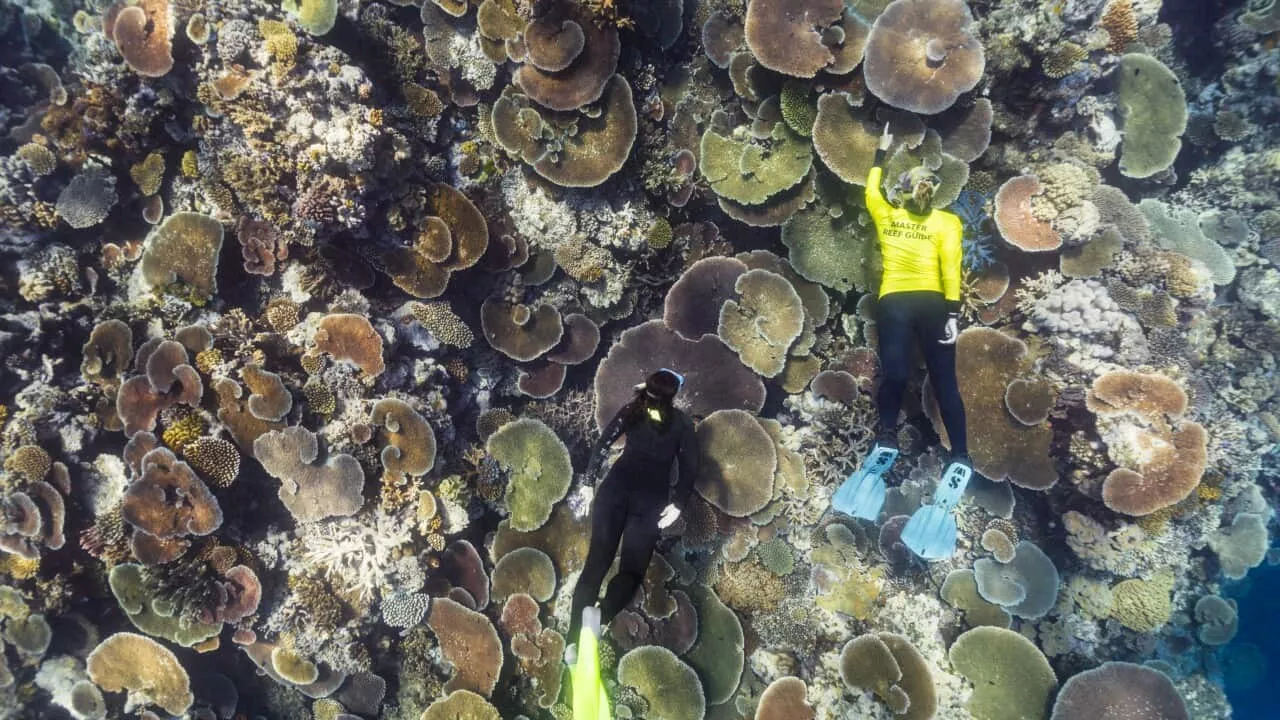During the annual Great Barrier Reef spawning event, tourism operators and researchers utilized the innovative 'coral IVF' technique to enhance coral reproduction and contribute to the reef's restoration.
Tourism operators and the local reef industry worked overnight during the annual Great Barrier Reef spawning event, implementing restoration techniques to help boost healthy coral numbers. The annual coral spawning event, triggered by the November full moon, sees the Great Barrier Reef 's corals come to life in an underwater 'snowstorm' by releasing trillions of eggs and sperm into the water in a mass breeding phenomenon.
This year, a team from the Australian Institute of Marine Science, along with Cairns and Port Douglas tourism operators and marine industries, used the innovative 'coral IVF' technique to boost coral baby production during spawning. Scientists estimate that coral IVF improves fertilisation rates by 100-fold - raising chances from one in a million in natural settings to one in 10,000. The event occurs at night, reducing the risk of consumption by plankton-eating fish. The eggs and sperm rise to the ocean's surface, where they form a pink-brown slick. Fertilisation takes place as eggs and sperm combine to produce larvae, which develop into coral polyps over about ten days. These polyps then settle on the reef, growing into new coral structures and contributing to the reef's regeneration. This natural process is essential for maintaining the biodiversity and resilience of the Great Barrier Reef. Coral IVF is an overnight process, where millions of coral eggs and sperm are captured and placed in specially designed floating larval pools set up in two different locations in the region. The delicate spawn bundles will stay in the nursery pools for up to a week as they develop into coral babies. Once ready, they are placed onto reefs, which include locations that have been impacted by recent bleaching events , where they can grow into healthy young corals and help bring new life to the Great Barrier Ree
Great Barrier Reef Coral Spawning Coral IVF Restoration Biodiversity
Australia Latest News, Australia Headlines
Similar News:You can also read news stories similar to this one that we have collected from other news sources.
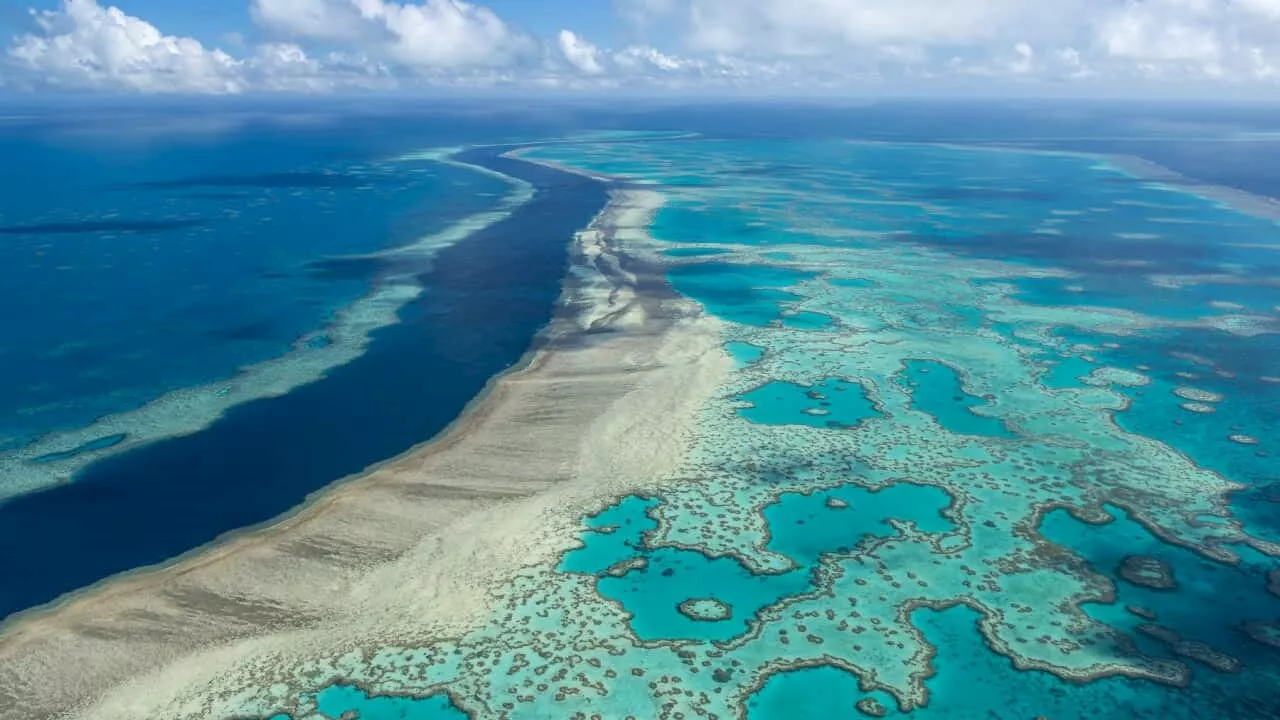 New report notes further decline in Great Barrier Reef coral coverSubstantial coral losses on the Great Barrier Reef of up to 72 per cent have been recorded following extensive bleaching and natural disasters last summer. The declines have been noted in new research - from the Australian Institute of Marine Science - for more than half of its reefs surveyed between Lizard Island and Cardwell.
New report notes further decline in Great Barrier Reef coral coverSubstantial coral losses on the Great Barrier Reef of up to 72 per cent have been recorded following extensive bleaching and natural disasters last summer. The declines have been noted in new research - from the Australian Institute of Marine Science - for more than half of its reefs surveyed between Lizard Island and Cardwell.
Read more »
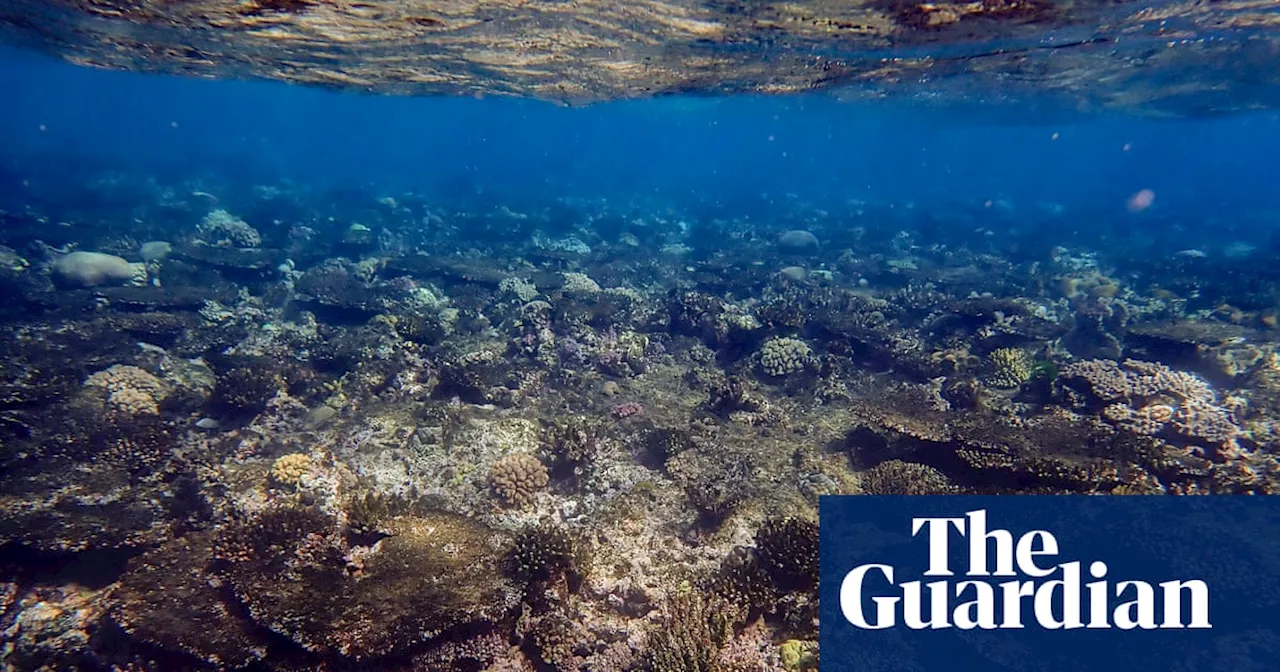 ‘Graveyard of corals’ found after extreme heat and cyclones hit northern Great Barrier ReefMarine scientists say one area around Cooktown and Lizard Island had lost more than a third of its live hard coral after bleaching event
‘Graveyard of corals’ found after extreme heat and cyclones hit northern Great Barrier ReefMarine scientists say one area around Cooktown and Lizard Island had lost more than a third of its live hard coral after bleaching event
Read more »
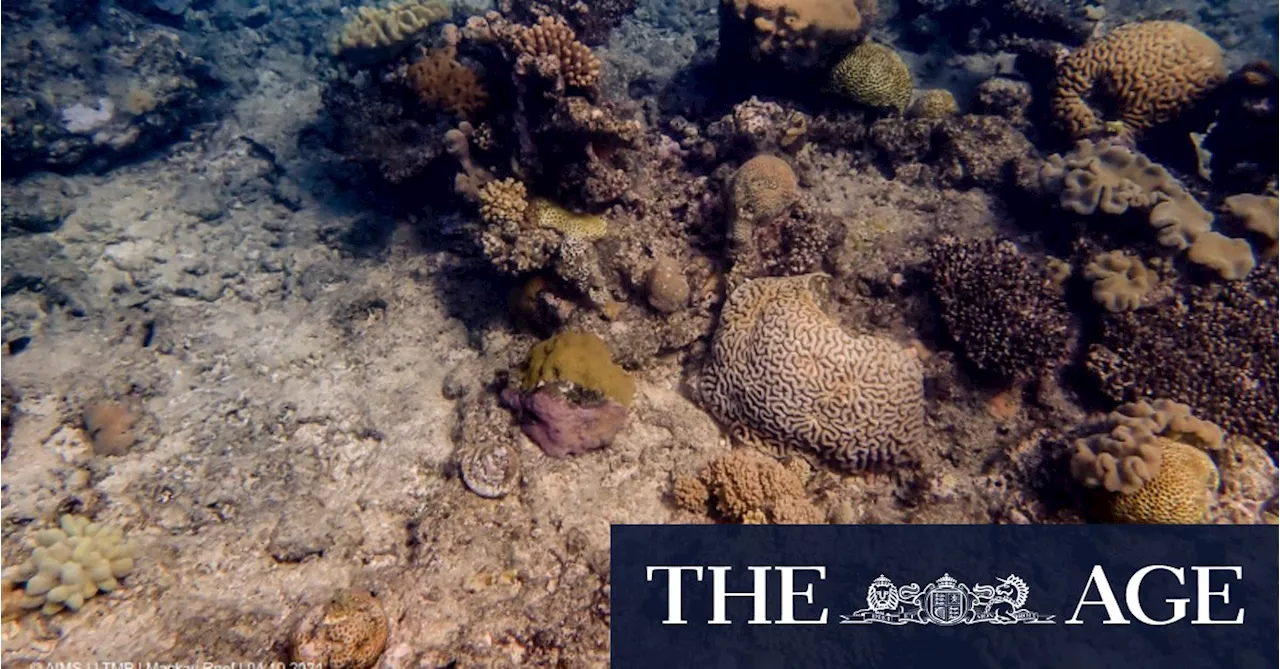 ‘Worst fears realised’: One-third of corals dead on section of Barrier ReefThe results of the first surveys of bleached corals after a mass bleaching event show severe damage to a section of the Great Barrier Reef.
‘Worst fears realised’: One-third of corals dead on section of Barrier ReefThe results of the first surveys of bleached corals after a mass bleaching event show severe damage to a section of the Great Barrier Reef.
Read more »
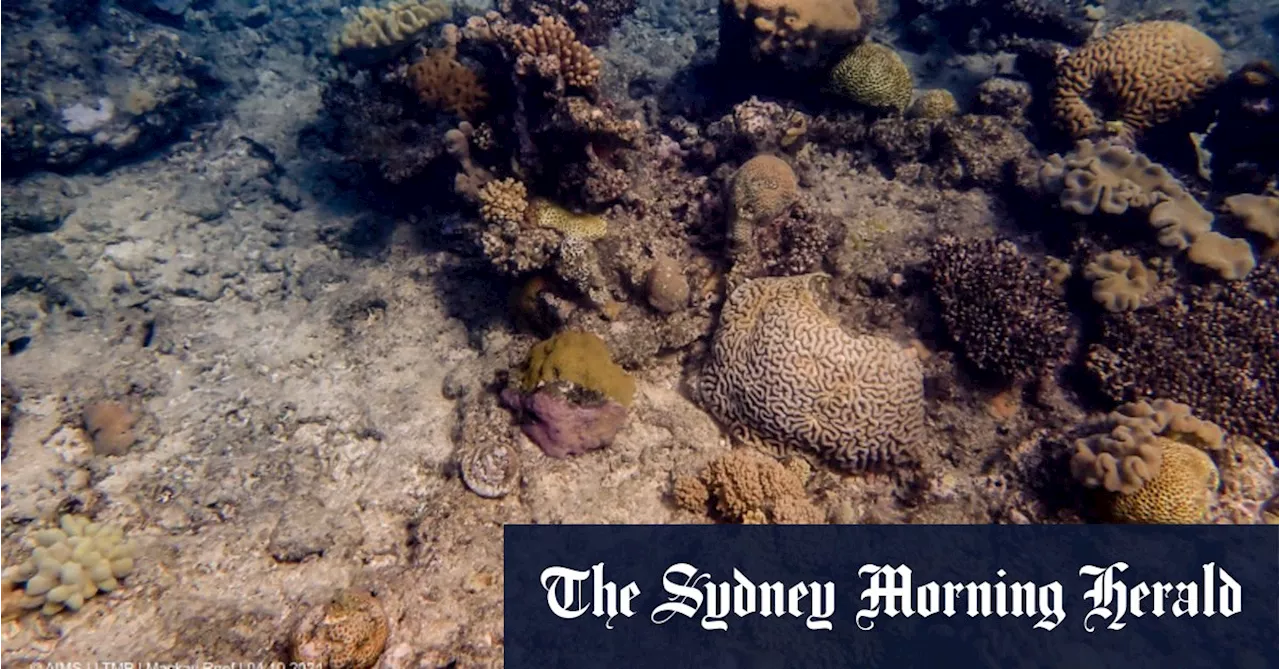 ‘Worst fears realised’: One-third of corals dead on section of Barrier ReefThe results of the first surveys of bleached corals after a mass bleaching event show severe damage to a section of the Great Barrier Reef.
‘Worst fears realised’: One-third of corals dead on section of Barrier ReefThe results of the first surveys of bleached corals after a mass bleaching event show severe damage to a section of the Great Barrier Reef.
Read more »
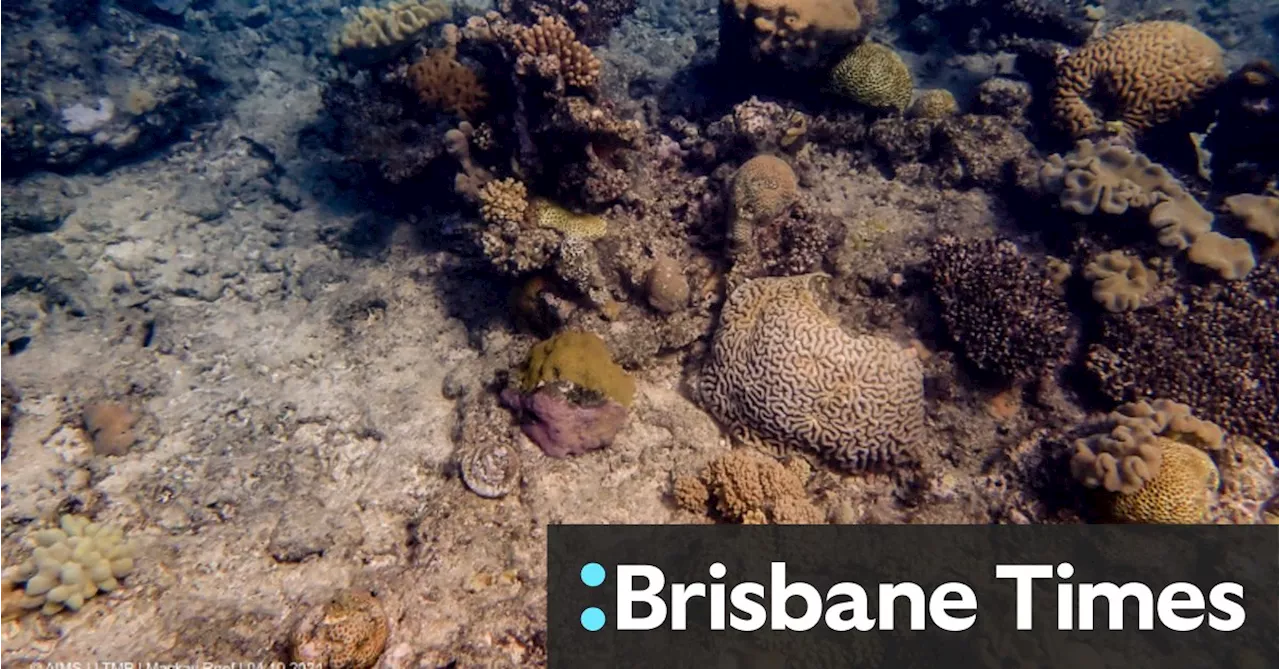 ‘Worst fears realised’: One-third of corals dead on section of Barrier ReefThe results of the first surveys of bleached corals after a mass bleaching event show severe damage to a section of the Great Barrier Reef.
‘Worst fears realised’: One-third of corals dead on section of Barrier ReefThe results of the first surveys of bleached corals after a mass bleaching event show severe damage to a section of the Great Barrier Reef.
Read more »
 Parts of Great Barrier Reef record worst coral loss in 39 years, early AIMS survey results showLarge sections of the Great Barrier Reef appear to have been smashed by climate change and cyclones this year, with one reef near Lizard Island losing nearly three quarters of its coral cover since the beginning of the year.
Parts of Great Barrier Reef record worst coral loss in 39 years, early AIMS survey results showLarge sections of the Great Barrier Reef appear to have been smashed by climate change and cyclones this year, with one reef near Lizard Island losing nearly three quarters of its coral cover since the beginning of the year.
Read more »
